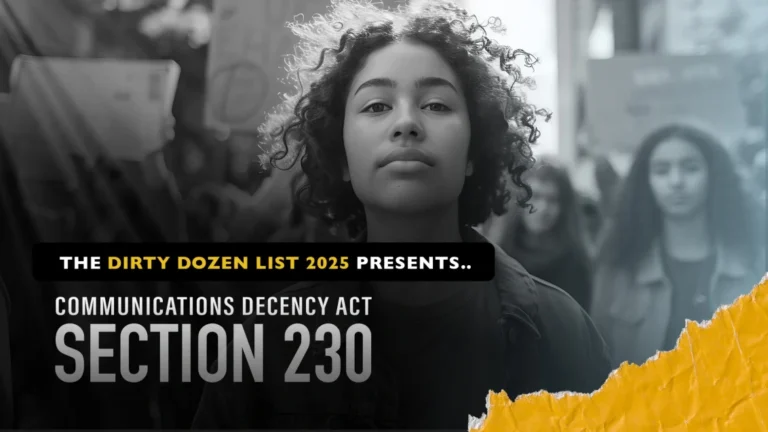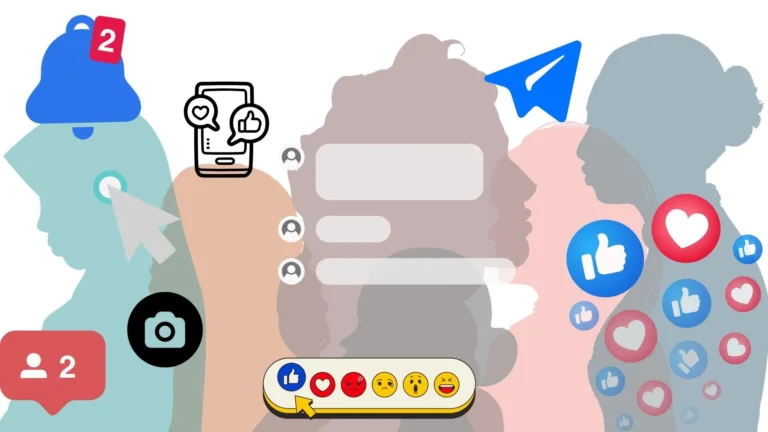The use of pornography has increased dramatically since the introduction of the Internet. With free, easy access to sexually explicit material across more platforms, pornography now reaches a greater variety of audiences. Now, decades into the Internet age, concerns about the public health impacts of pornography are mounting.
This National Public Health Week, we aim to discuss how pornography is a growing public health issue. With 100s of peer-reviewed, published research articles linking pornography to current public health issues, it is hard to ignore the extent that sexually explicit materials influence individuals, families, and society. As children are often exposed to pornography before hitting puberty,[1] it is important that we understand the “breadth and depth of pornography’s influence on popular culture” and “the well-being of countless individuals.”[2]
With 100s of peer-reviewed, published research articles linking pornography to current public health issues, it is time to recognize porn's public health impacts. #publichealth #PublicHealthWeek #NationalPublicHealthWeek Share on XPornography and Individuals
Pornography has detrimental impacts on the brain. In a study mapping the brain reactions of individuals seeking treatment for problematic pornography use (PPU), similarities to other behavioral addictions such as gambling, or substance abuse were discovered.[3] There is also evidence that pornography hijacks the motivation and reward responses (mesolimbic system) in the same way that drug use does.[4] As YourBrainOnPorn.com points out, “The results of 41 neurological studies (and upcoming studies) are consistent with 320+ Internet addiction “brain studies,” some of which also include internet porn use. All support the premise that internet porn use can cause addiction-related brain changes, as do studies reporting escalation or tolerance”
Viewing pornography is also related to mental health concerns. Specifically, pornography has an association with feelings of:
- Loneliness,[6]
- Mood and anxiety disorders,[7]
- Negative body image in both men[8] and women,[9]
- Lower sexual satisfaction,[10]
- Sexually aggressive behavior,[11]
- And, other risky behaviors, such as more sex partners and drug/ alcohol use.[12]
Pornography and Families
The impact that today’s sexualized media has on children is larger than one may initially think. With increased amounts of sexualized material in today’s media, children are becoming exposed to pornographic material at earlier ages.[13] This result from increased time spent online, on social media platforms and streaming services, and gaming services puts children at risk for damage to their growing brains,[14] regular use or viewing of pornography,[15] sending or requesting sexually explicit images,[16] often referred to as sexting, and poor emotional bonds to caregivers.[17] To put it another way, with growing minds and impressionable personalities, our children are vulnerable developmentally to these graphic and often violent images and videos.
Children and adolescents viewing these images and videos occasionally face questions about sexuality that they are embarrassed to ask a parent or guardian about. The youth then turn to the internet to search for answers for themselves, where search terms entered innocently can accidently trigger explicit material. Recently, a college student and mother of three shared with us her experience with searching synonyms of the word “bondage” for a school assignment. It is alarming for any adult to unexpectedly encounter pornified imagery and sexual content, and difficult for us to imagine the results children may view in their internet searches.
Pornography also harms marital relationships. Project Know, an American Addiction Centers Resource website, offers that porn harms individuals by encouraging isolation of oneself in order to view porn, ignoring or replacing relationships in order to view porn, and comparing of sexual partners to performers in pornography. With family members and partners isolating themselves and neglecting responsibilities, relationships become strained and may even end. This breakdown of family dynamics can lead to a number of issues for individuals and children.[18] Extramarital affairs and romantic breakups resulting from the use of pornography of one or multiple family members can lead to mental health problems and self-esteem issues of the individuals affected.[19]
Pornography and Society
Pornography research shows an increase in violence against women and girls. A content analysis of 172 Porn Hub videos found that 43% of the videos included what the researchers categorized as ‘Visible aggression’. Females of all ages depicted in these videos were also more likely to display pleasure in videos featuring physical aggression than those that did not. These videos “may signal to viewers of all ages that these acts are not only normative and legitimate, but perhaps even expected.”[20] Pornography of this nature teaches that violence against women and girls is normal and expected.
Culture Reframed’s Gail Dines explained that pornography is a macro public health issue because its effects influence everyone at every stage of life. As we come to understand in greater detail the social effects of the influence of hypersexualized media and the porn industry, experts and society alike are obligated to recognize the negative outcomes that permeate our culture today.
The CDC told CNN that “Pornography can be connected to other public health issues like sexual violence and occupational HIV transmission.” The national movement to claim pornography as a public health crisis, includes 12 states who recognize the harmful effects of pornography and aim to curb the demand for this form of sexual exploitation through legislation.
Join us as we support these states in their efforts to fight the normalization of pornography and spread awareness of the negative public consequences of pornography in our culture. Follow us on Twitter, Instagram, and Facebook this week as we continue to share research about pornography and the efforts NCOSE allies are making to end sexual exploitation.
Citations:
[1] Chyng Sun, Ana Bridges, Jennifer Johnson, and Matt Ezzell, “Pornography and the Male Sexual Script: An Analysis of Consumption and Sexual Relations,” Archives of Sexual Behavior 45, no. 4 (May, 2016): 983-94.
[2] National Center on Sexual Exploitation, “Pornography and Public Health: Research Summary”
[3] Mateusz Gola et al., “Can Pornography be Addictive? An fMRI Study of Men Seeking Treatment for Problematic Pornography Use,” Neuropsychopharmacology, 2017, doi: 10.1038/npp.2017.78
[4] Brian Y. Park et al., “Is Internet Pornography Causing Sexual Dysfunctions? A Review with Clinical Reports,” Behavioral Sciences 6, no. 17 (2016): 1-25.
[5] Mark H. Butler et al., “Pornography Use and Loneliness: A Bi-Directional Recursive Model and Pilot Investigation,” Journal of Sex & Marital Therapy, March 7, 2017, doi:10.1080/0092623×2017.1321601
[6] Butler et al., ibid.
[7] Shane W. Kraus, Marc N. Potenza, Steve Martino, and Jon E. Grant, “Examining the Psychometric Properties of the Yale-Brown-Obsessive-Compulsive Scale in a Sample of Compulsive Pornography Users,” Comprehensive Psychiatry 59 (2015): 117-122, doi:10.1016/j.comppsych.2015.02.007
[8] Aline Wéry and Joel Billieux, “Online Sexual Activities; An Exploratory Study of Problematic and Non-Problematic Usage Patterns in a Sample of Men,” Computers in Human Behavior 56 (2016): 257-266
[9] Julie M. Albright, “Sex in America Online: An Exploration of Sex, Marital Status, and Sexual Identity in Internet Sex Seeking and Its Impacts,” Journal of Sex Research 45 (2008): 175-186, doi:10.1080/00224490801987481.
[10] Abd El-Rahman, Eman M. Sanad, and Hanaa H. Bayomy, “Effect of Soft-Core Pornography on Female Sexuality,” Human Andrology 6, no. 2 (June 2016): 60-64, doi:10.1097/01.xha.0000481895.52939.a3; Park, ibid.
[11] Michele L. Ybarra, Kimberly J. Mitchell, Merle Hamburger, et al., “X-Rated Material and Perpetuation of Sexually Aggressive Behavior among Children and Adolescents: Is There a Link?” Aggressive Behavior 37 (2011): 1-18, doi: 10. 1002/ab.20367.
[12] Jason S. Carroll et al., “Generation XXX: Pornography Acceptance and Use Among Emerging Adults,” Journal of Adolescent Research 23, no.1 (2008): 6-30; Svedin, ibid.
[13] Megan S. C. Lim, Paul A. Agius, Elise R. Carroette, et al., “Young Australians Use of Pornography and Associations with Sexual Risk Behaviours,” Australian and New Zealand Journal of Public Health 41, no 4. (2017): 438-443.
[14] Frances E. Jensen with Amy Ellis Nutt, The Teenage Brain: A neuroscientist’s Survival Guild to Raising Adolescents and Young Adults, (New York; Harper Collins, 2015); Tamera L. Doremus-Fitzwater, Elena I Varlinskaya, and Linda P. Spear, “Motivational Systems in Adolescence: Possible Implications for Age Differences in Substance Abuse and Other Risk-Taking Behaviors,” Brain and Cognition 71, no.1 (2010): 114-123.
[15] Barna Group, The Porn Phenomenon: The Impact of Pornography in the Digital Age, (Ventura, CA: Josh McDowell Ministry, 2016).
[16] Nicky Stanley et al., “Pornography, Sexual Coercion and Abuse and Sexting in Young People’s Intimate Relationships: A European Study,” Journal of Interpersonal Violence (2016): 1-26.
[17] Michelle L. Ybarra and Kimberly Mitchell, “Exposure to Internet Pornography among Children and Adolescents: A National Survey,” CyberPsychology & Behavior 8, no. 5 (2005): 473-486.
[18] Michael Malcolm and George Naufal, “Are Pornography and Marriage Substitutes for Young men?” Eastern Economic Journal 42 (2016): 317-334.
[19] Paul J Wright, Robert S. Tokunaga, and Soyoung Bae, “More Than a Dalliance? Pornography Consumption and Extramarital Sex Attitudes among Married U.S. Adults,” Psychology of Popular Media Culture 3, no. 2 (2014): 97-109; Samuel L. Perry and Joshua T. Davis, “Are Pornography Users More Likely to Experience A Romantic Breakup? Evidence from Longitudinal Data,” Sexuality and Culture, https://www.academia.edu/32868948/Are_Pornography_Users_More_Likely_to_Experience_A_Romantic_Breakup_Evidence_from_Longitudinal_Data.
[20] Eran Shor, “Age, Aggression, and Pleasure in Popular Online Pornographic Videos,” Violence Against Women (2018):1-19, doi:10.1177/1077801218804101.



